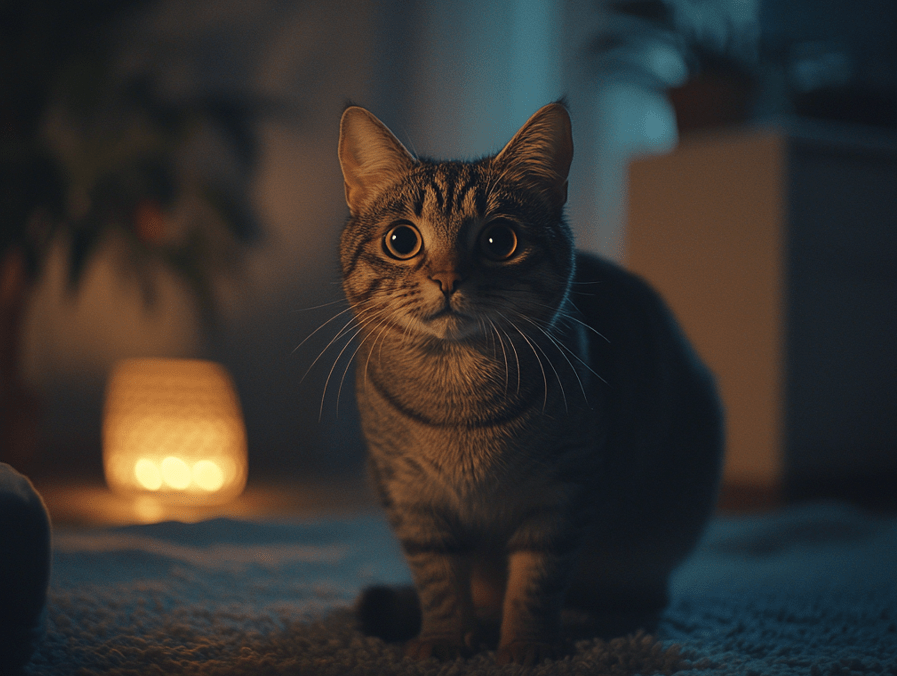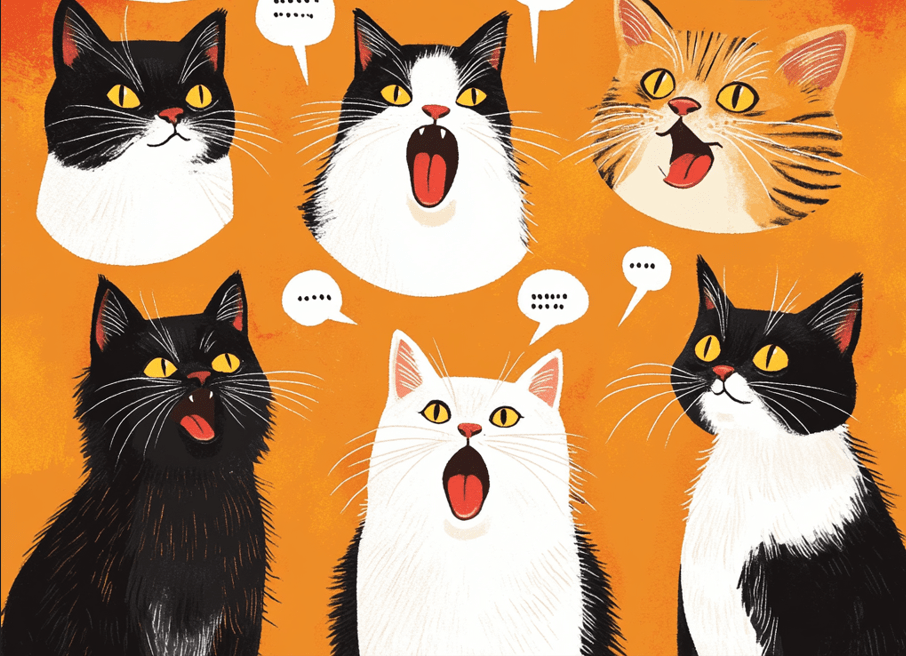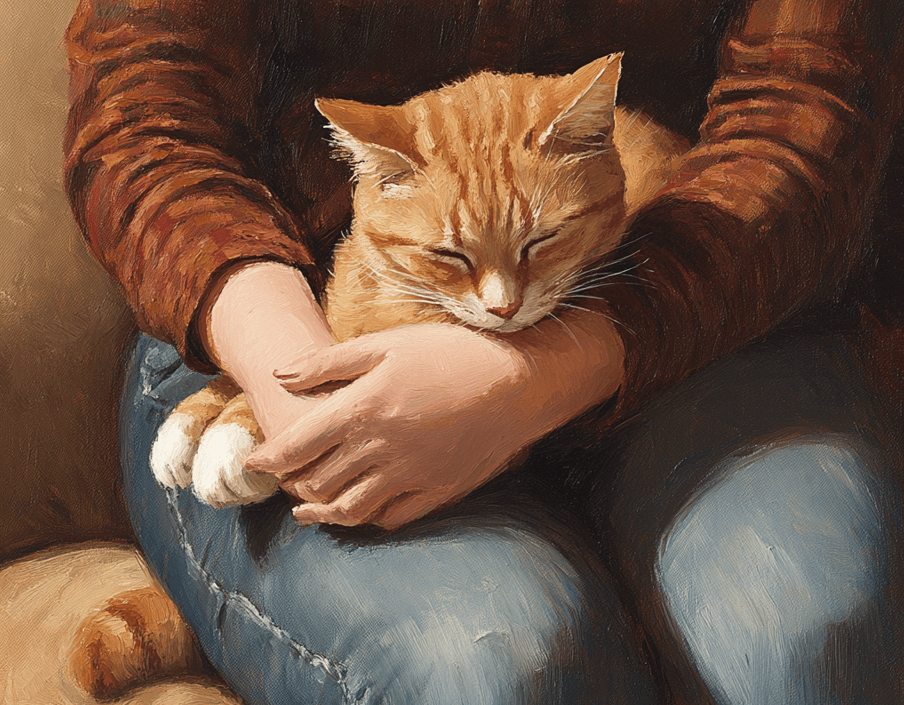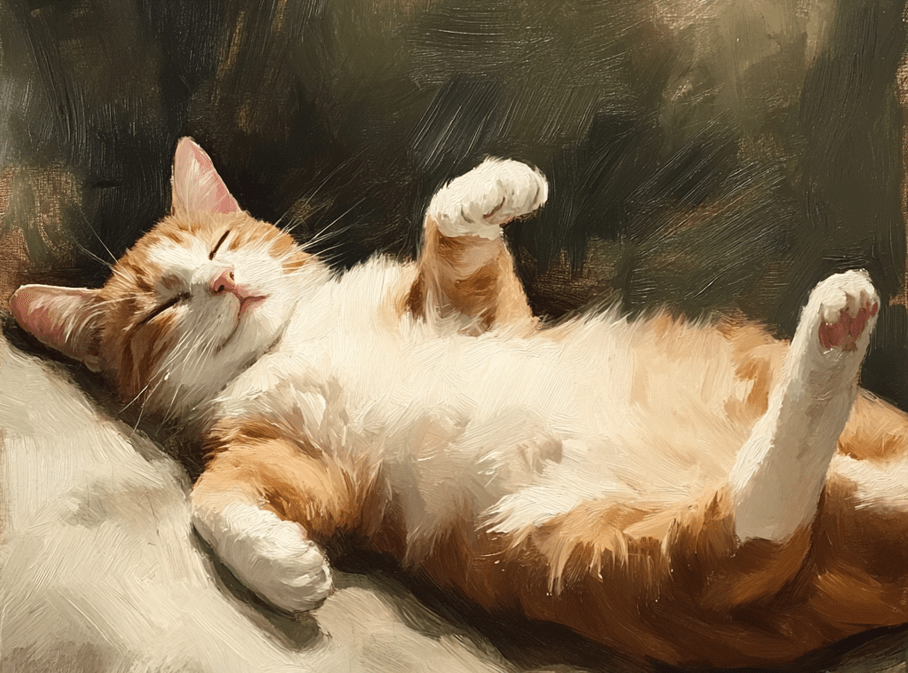
The body language of cats is really fascinating, and they have a specific manner of putting across their emotions or opinions with their most-valued assets – Its eyes, ears, whiskers, tail movements as well as verbalizations. By watching and tracking these signals, we can learn about the inner state of our felines, and be more responsive to their needs.
Whether the environment, surrounding context of the events that led you to feel your cat has been angry or bad and external stimuli all play an important role in assessing body language with a feline. Consider the sensory signals, such as sights or sounds or smells that might affect the behavior, but in this case you must imagine that from the cat’s perspective. As an example, if someone accidently traps a cat, it can become frightened or threatened. Likewise, if a cat seems to be crying for no reason at all, that could actually mean that the animal is sick or in pain.
Here are some of the most common pieces of body language that signal to you which emotional experience your cat is having.
To watch the summary of this article, just watch this video-
Happy Cat Body Language Interpretation
In general, a cat is relaxed when they feel good about something. They may stretch their legs and tail while resting, lying comfortably away from the body. Another indication of feeling safe is if they reveal their belly—but that doesn’t necessarily mean they want a belly rub! Another sign that a cat is happy is when they cuddle up next to you or knead you with their paws.
Eyes: The eyes of a happy feline can be round or partially closed and the pupils narrowed to slits. When a cat gives you a slow blink, it means they trust and love you. Unfortunately there’s no way to communicate that without the other person taking it the wrong idea but all that’s needed is for you to blink slowly back at them, just so they know your feelings are reciprocated.
Ears: if all is right in the world, a cat will have its ears standing upright and pointing toward the front.
Tail: An erect tail, with a slight curve in the end is a reliable sign that your cat is feeling confident and happy.
When they are happy, they may purr (expressing contentment and pleasure), meow (a way of greeting or communicating a need for food or attention) and trill (high-pitched purring sound as a sign of friendliness).
Playful Cat Body Language Interpretation
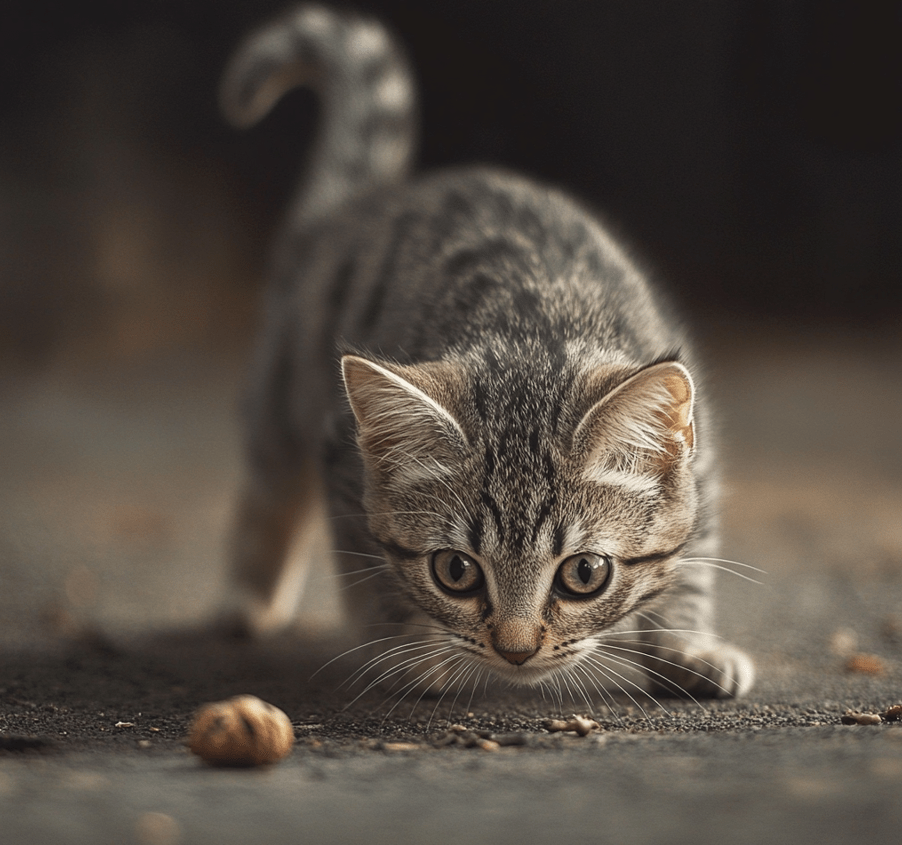
Cats are natural hunters, and playful behavior often mimics their predatory behavior. When they’re feeling frisky, they may stalk by crouching low, wagging their behinds side to side and chasing, pouncing or grabbing at toys.
Eyes: The eyes of a playful cat will be opened wide, normally with dilated pupils.
Ears: Their ears are likely to be pointed, and erect, facing forwards to demonstrate confidence.
Tail: A cat in hunting mode may whip its tail back and forth while stealthily stalking a target. But a tailed flicking without a clear target can mean it is an annoyed tail, not playful.
Play provides essential physical and mental exercise for cats, helping them stay healthy. So, if your cat behaves playfully in this way then providing them with a toy can be a good method of enrichment for them.
Stressed Cat Body Language Interpretation
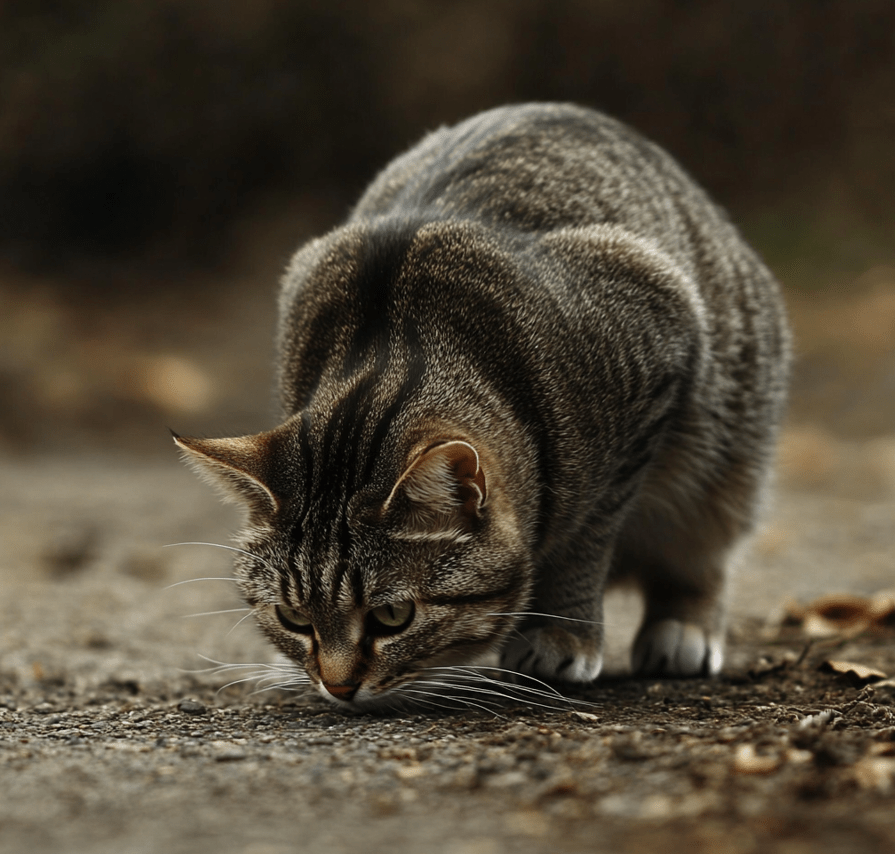
A cat that is stressed will typically have a stiff and tense body with an arched back crouching close to the ground. In terms of coping, some cats may demonstrate what is called a displacement behavior (common behaviors such as lip licking, scratching, grooming or yawning that are contextually inappropriate). Cats under a lot of stress may also pee or poop in places they shouldn’t be, outside the litter box.
Eyes: You can always tell a cat that is in stress by its eyes — these can be crossed with wide open or just feel narrowed.
Ears: Their ears could rotate sideways (like in an “airplane ears” position) or angle back and their whiskers might stick out further than normal.
Tail: The tail may be tucked close to the body or thumping rapidly, indicating an agitated state.
If you notice your cat showing signs of stress, determine and if possible eliminate the cause. When doing so might be making them uncomfortable, stop whatever you are doing to create a response inside of them.
Scared Cat Body Language Interpretation
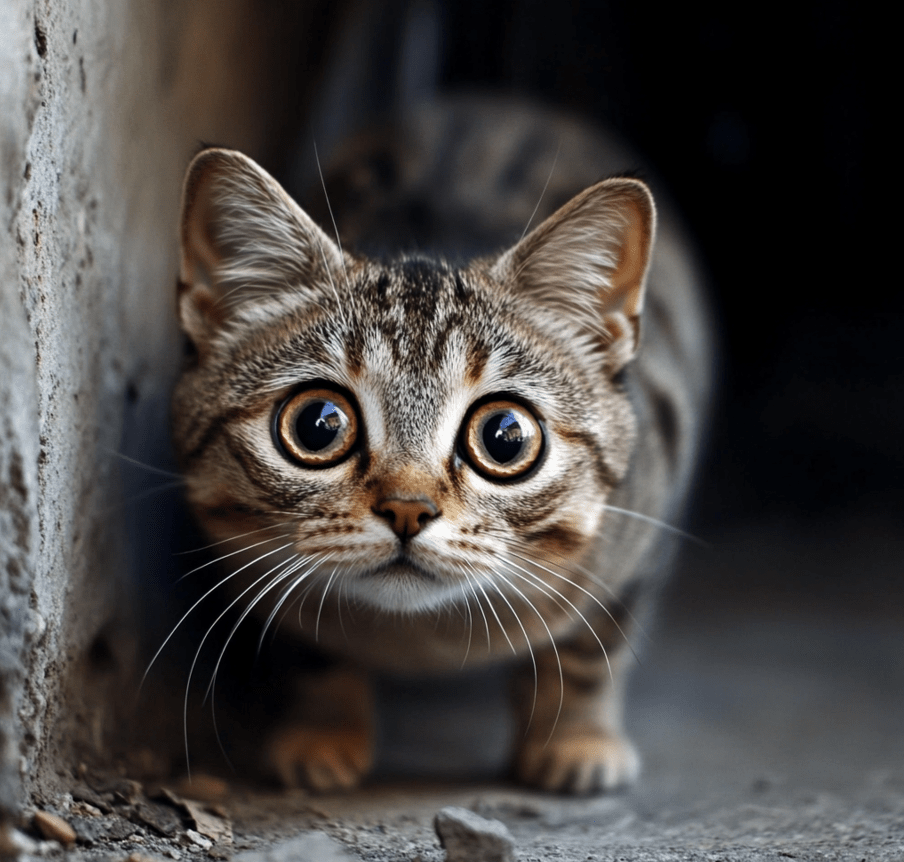
Although cats are natural predators, they can also experience fear because they may also be prey. If they sense something could be a threat, then they will often shrink down low to the ground and tense up their body in an instinctive effort to look smaller.
Eyes: Frightened cats will have their eyes wide open, and along with that the pupils will be dilated due to the fight-or-flight response.
Ears: a scared cat will have its ears turned backward or sideways. The greater the level of fear, however, the more flat to the head they are. Whiskers could as well push all over again beside their face.
Tail: A scared cat may wrap its tail around or under its body.
Cats sometimes are out of control but not in the way they have gone mad. They may start growling or hissing when they feel threatened, which is how they warn others that hey, back off! For the most part hissing is a reflex response due either to fear or shock. As their stress level rises, they may release a long yowl, then a quick screech to indicate their readiness for battle.
If a cat is exhibiting body language that suggests fear, you should limit whatever aspect of the environment is causing their anxiety response. Because frightened cats look for a safe haven, they need hiding spots and high places to escape to in their environment.
Aggressive Cat Body Language Interpretation
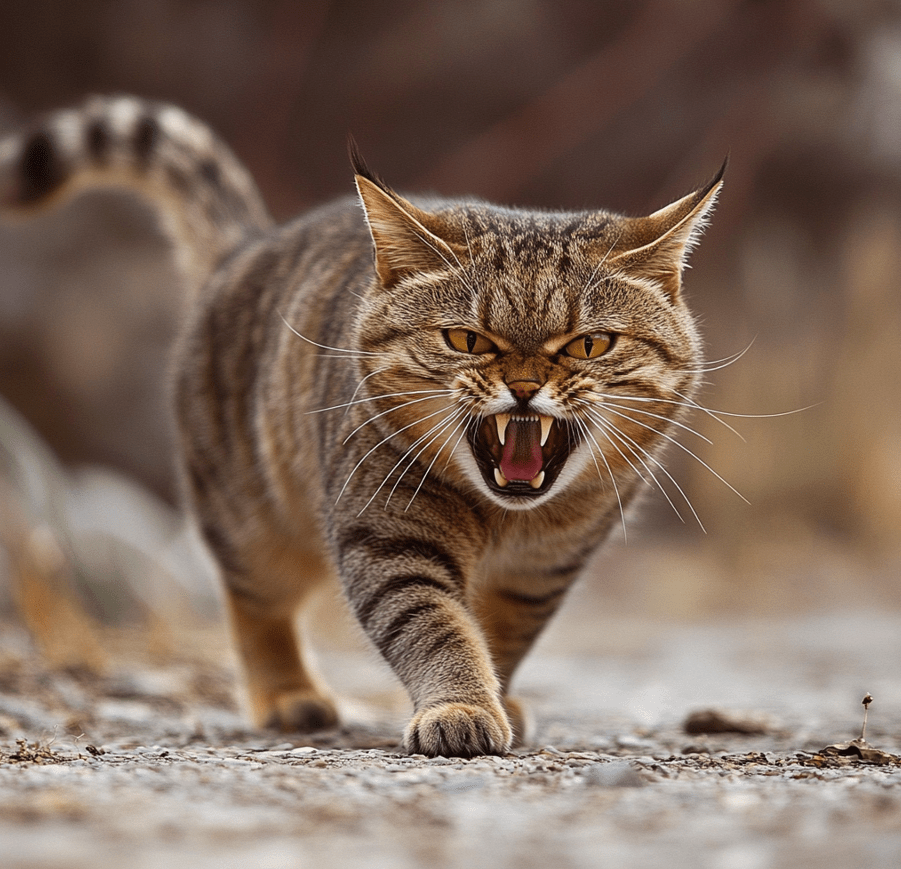
If a cat thinks they need to fight, it will consider fighting as the only way to ensure safety. The cat wills in those moments try to enlarge its body and make it appear more threatening by raising its back and making its hairs stand on end. This response is called piloerection. These instincts are shown when a cat feels fear.
Eyes: If the cat is getting ready to attack, it may have its eyes wide open with pupils fully dilated. Adjusted pupils could also indicate aggression. If it involves a possible threat, they may focus on that to keep the emphasis on the danger.
Ears: The ears will most likely be flat against the head, and the whiskers could be either pressed on the cheeks or pushed forward.
Tail: The tail may wag or whip back and forth.
Cats have also been known to growl or hiss around others, issuing a warning that they do not want direct aggression from the other kitty. If these signals are missed, the cat may hiss, a reflex action that is often followed by a lunge or swipe. The same goes for spitting, like hissing, this is natural.
Although these aggressive behaviors are often quite recognizable by pet owners, it is hard to rationally remember that when a cat is acting aggressively, it isn’t out of malice or revenge: they simply panic. When you see these signs, it is better to take them away from the threat and give the cat some space to settle down.
Sick or Painful Cat Body Language Interpretation
Understanding the body language of a cat can give you important information about how they are feeling, and it can also suggest that something physically is not right or wrong. Cats are masters of hiding pain, so visible changes in behavior can be the first indication that all is not well.
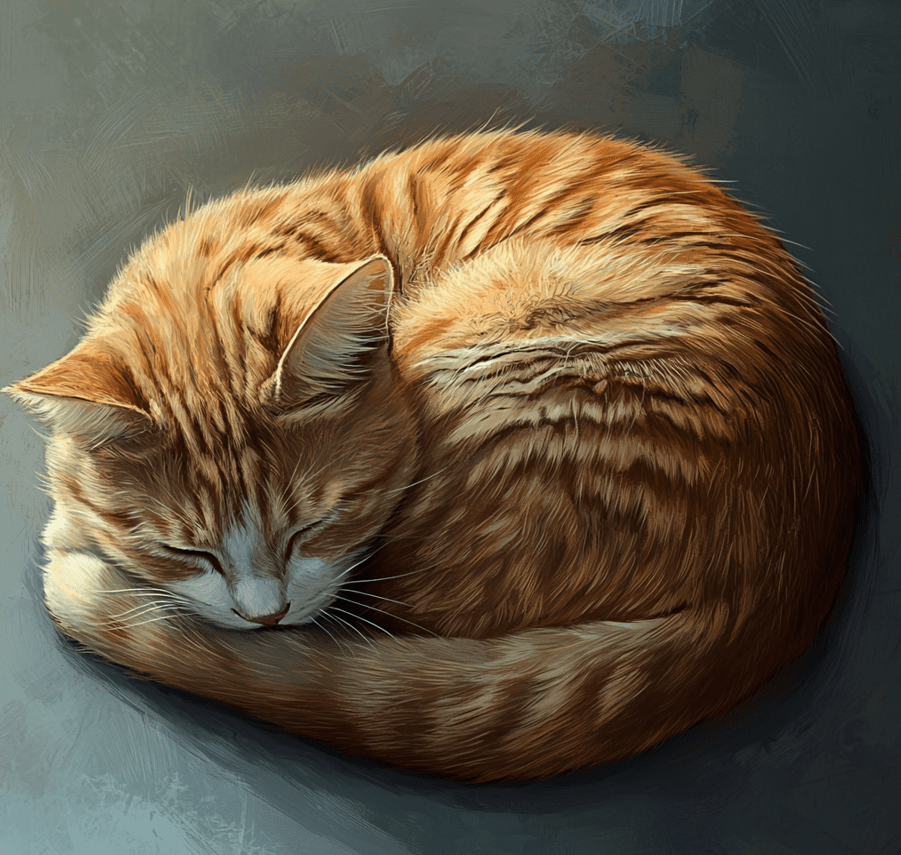
A sick or painful cat will maintain a more rounded position, crouching with its legs beneath it and possibly flexed muscles.
Eyes: The eyes of a sick or painful cat may be squinted and remain shut, looking glassy or dazed. You may see the third eyelid, the pink membrane at the corner of your eye.
Ears: drooping or turning sideways show the cat is uncomfortable.
Tail: The tail is not in a neutral position; instead, it may be dried up under or wrapped tightly around the body.
On the other side of things, cats also purr when they are in pain or not feeling well — plus more meowing or yowling can signal mental anguish (like boredom) or illness.
If you see any of these changes, or if your cat is acting in any way out of the ordinary such as hiding away, aggression, lethargy and changes in eating, grooming & socializing patterns you should take them to a vet!
Seeing these small changes in body language allows you to realize the emotional and physical needs of your feline friend so that as a wise caregiver, you can respond accordingly – rather than just labeling it as behavioral change!

